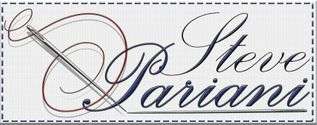We’ve all been there. Standing in front of the mirror, a crisp dress shirt on, and a tie dangling limply in our hands. The looming challenge of the necktie How to tie a necktie plagues even the most seasoned professionals at times. Fear not, fellow tie novices! This comprehensive guide will transform you from fumbling beginner to confident tie-tying maestro.
Beyond the frustration of fumbled knots lies a world of dapper potential. A well-tied tie adds a touch of sophistication to any outfit, boosting your confidence and leaving a lasting impression. Studies have consistently shown that well-dressed individuals are often perceived as more competent and trustworthy. So, mastering the necktie isn’t just about aesthetics; it’s a practical skill that can benefit you in various social and professional settings.
But where to begin? The internet overflows with guides on how to tie a necktie, each promoting a different knot. While the classic Four-in-Hand is a great starting point, there’s a whole world of knots to explore, each with its own unique character. This guide will equip you with the knowledge to conquer the Four-in-Hand and introduce you to some lesser-known options that might surprise you.
The Essential Four-in-Hand: A Necktie Classic

The Four-in-Hand is the undisputed champion of beginner-friendly knots. Its simplicity and symmetrical form make it perfect for most occasions. Here’s a step-by-step breakdown to master a necktie How to tie:
- Prep Work: Hang the tie around your neck with the wide end roughly six inches longer than the narrow end.
- Cross & Loop: Cross the wide end over the narrow end, creating a diagonal line across your chest. Hold the narrow end in place with your thumb and forefinger.
- Under & Through: Bring the wide end under and then up through the loop you just created around your neck.
- Big Loop, Small Loop: Now, bring the wide end down and over the narrow end again, forming a large loop in front of you. Thread the wide end up through the smaller loop created by the tie and your neck.
- Snug Up: Gently pull both ends of the tie to tighten the knot. Adjust the knot’s position until it sits evenly centered beneath your shirt collar.
Pro Tip: Practice makes perfect! Don’t get discouraged if it takes a few tries to get the hang of it. Websites like YouTube offer plenty of visual tutorials to guide you through the process.
Necktie How to Tie: Exploring Different Knots
Once you’ve mastered the Four-in-Hand, why not venture beyond the basics? Here are a few interesting “necktie how to tie” options to add to your repertoire:
- The Pratt Knot: This elegant knot has a similar size and symmetry to the Four-in-Hand, but with a slightly more defined dimple. Perfect for adding a touch of sophistication to a business casual outfit.
- The Half-Windsor Knot: A step up in formality from the Four-in-Hand, the Half-Windsor creates a slightly larger, triangular knot. Ideal for job interviews, presentations, and other formal settings.
- The Bow Tie: Not technically a knot, but a classic alternative nonetheless. The bow tie adds a touch of whimsy and personality to your attire. Mastering the bow tie might take some practice, but detailed tutorials are readily available online.
Remember, the ideal necktie how to tie choice depends on the occasion, the formality of your attire, and even the collar style of your shirt. Experiment with different knots to find what complements your look and personality best.
Considerations Beyond the Knot

Now that you’ve got the knotting basics down, let’s explore some additional factors that contribute to a well-tied tie:
- Tie Length: The bottom of your tie should ideally reach the top of your belt buckle. If it’s too long or too short, it throws off the entire look.
- Collar Fit: A well-fitting shirt collar is crucial. A collar that’s too loose will make the knot appear sloppy, while a tight collar can restrict movement and comfort.
- Tie Material: Silk ties offer a luxurious drape but may wrinkle more easily. Polyester ties are wrinkle-resistant but can appear less formal. Choose a tie material that suits the occasion and your personal preference.
- Tie Width: The width of your tie should complement the width of your lapels. A wider tie typically pairs best with wider lapels, while a narrower tie works better with narrower lapels.
- Occasion: The formality of the occasion should dictate your tie choice. For formal events, opt for a silk tie in a solid color or a classic pattern. For more casual settings, a patterned tie or a knit tie can add a touch of personality.
By considering these additional factors, you can ensure that your tie complements your outfit and enhances your overall appearance.
Necktie How to Tie FAQs
Q: How do I know if I’ve tied the knot correctly?
A: A well-tied knot should be symmetrical, centered, and snug but not overly tight. If the knot is lopsided or appears loose, you may need to adjust it.
Q: Can I wear the same tie with different outfits?
A: Absolutely! A versatile tie can be paired with various outfits. Consider the color, pattern, and fabric of the tie when choosing your ensemble.
Q: How often should I clean my ties?
A: Ties should be cleaned regularly to maintain their appearance and prevent odors. Most ties can be hand-washed in cool water with a gentle detergent. Avoid machine washing, as it can damage the fabric.
Q: Are there any tips for choosing a good-quality tie?
A: Look for a tie with a smooth, even weave. The fabric should feel substantial but not overly stiff. Pay attention to the stitching and lining, as these details can indicate the quality of construction.
Q: What should I do if I accidentally stain my tie?
A: Act quickly to treat the stain. Blot the stain with a clean, damp cloth and avoid rubbing. If the stain persists, consider taking the tie to a professional dry cleaner.
Conclusion

Mastering the art of a necktie how to tie one is a valuable skill that can elevate your style and boost your confidence. Whether you’re a seasoned professional or just starting your journey into the world of ties, remember that practice makes perfect. Experiment with different knots, fabrics, and colors to find what suits your personal style.
Steve Pariani is a concierge bespoke tailor that can help you with not only choosing the right tie but your entire ensemble. If you’re just starting out on your bespoke tailor journey, we offer “starter pack” options which include an entire suit and some additional clothing options for variance. These packs help to ensure you lack nothing in your professional ensemble.
So, the next time you find yourself staring at a tie, don’t panic. With the knowledge and techniques you’ve gained from this guide, you’ll be well-equipped to tie the perfect knot and make a lasting impression.
Now, it’s time to put your new skills to the test. Which knot will you choose to tie today?





0 Comments